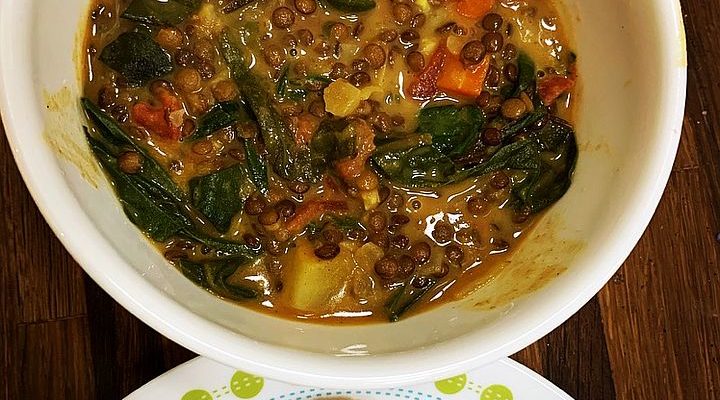Heirloom tomatoes are the prima donnas of the farm. They are fussy. They are high maintenance. But we put up with them, because they are so vastly superior in taste. We’ve had a lot of folks turning up at the farmers market who know they want an heirloom tomato, but they don’t really know what that means. First, let’s make sure we are all clear on the lingo:
If you save the seeds from a Green Zebra tomato and grow them, you’ll get another Green Zebra. That is because they are an open-pollinated variety. Open-pollinated varieties are stable, reproducing themselves reliably season after season.
Hybrid tomatoes are produced through controlled closed pollination. The pollen from one specific variety is used to pollinate the flower of a different specific variety. They are typically developed by universities and seed companies and are the intellectual property of those entities. If you save the seeds from hybrid tomatoes and replant them, each plant will be different and may or may not have the desirable qualities of the parent plant. In seed catalogues, hybrid varieties are often labeled with (F1) following their name, indicating a first generation hybrid. Hybrid tomatoes are not GMOs. Genetically Modified tomatoes have had specific changes introduced into their DNA through genetic engineering techniques. You won’t find them here: there are currently no commercially available GMO tomatoes.
The specific definition of an Heirloom tomato is under debate, although it is generally understood to be a variety (or cultivar) that existed prior to the 1950’s, when hybrids became the norm in commercial agriculture. Heirlooms are often (but not always) non-commercial varieties that were grown for home use by gardeners, farmers, and in farming communities. All heirloom tomatoes are open-pollinated, but not all open-pollinated tomatoes are heirlooms.
To understand the differences between these tomatoes, the distinction between hybrid and open-pollinated or heirloom is probably less important than the distinction between commercial and non-commercial. Commercial varieties (hybrids) have to stand up to shipping all over the country and even all over the world. They have to be very firm with thick skins that will tolerate that kind of abuse. They have to hold well, that means to stay ripe for a long time before they go bad. They also have to be very uniform in size, shape, and color. People expect a tomato to be round and red all over – and so they are. All of these qualities take precedence over texture and flavor. Who cares how good a tomato tastes if it is rotten mush by the time it makes it to the grocery store? [Not all hybrids taste like Styrofoam – new hybrids for market farmers are being developed…read on, I discuss this below]
The heirloom tomato story is very different. Imagine a farm family growing tomatoes in their own garden. Those tomatoes only had to make it from the garden to the kitchen – and if they split on the way, who cares? What mattered was growing the most delicious tomato possible. In many cases, this led to tomatoes that have green shoulders, are susceptible to cracking, and are otherwise finicky. Often, they are very well adapted to a specific region’s climate with resistance to local pests and diseases. While hybrids are bred for uniformity, heirlooms are a celebration of diversity in color, size, shape and – most importantly – flavor.
But these days, most Americans don’t live on farms and grow their own tomatoes. Most of us buy tomatoes at the store and hopefully at the farmers market. More and more, people are realizing they have been duped by the “perfect” grocery store tomato. There is commercial demand for heirlooms, and small farmers like us are growing them for market. It can be a lot of work getting these fussy tomatoes from the field into your kitchen. They do not tolerate stacking – they must be placed in a single-layer in boxes or trays. Especially for larger tomatoes, they must be placed upside down so they don’t get crushed by their own weight. They must be picked when they are a little under-ripe or they will never make it. These tomatoes wait for no one. You eat the tomato when they tomato is ready.
Hybrid tomatoes, on the other hand, are low maintenance. A vine ripened hybrid is still a lot tastier than your grocery store fare which are picked green and artificially ripened with ethylene gas. They hold up better on the way to market, and they hold up better in your kitchen. And hybrid tomatoes are getting better. With the renaissance of farmers markets, demand has been steadily growing for tomatoes that fall in between these two extremes: tomatoes that are unique looking and taste good but don’t run your life. Companies like Johnny’s Selected Seeds that specialize in seeds for market growers are offering hybrid tomatoes that are reliable enough for farmers, but unique and tasty enough for consumers. They still have a long way to go to catch up to that heirloom flavor.
I prefer the heirlooms and open-pollinated varieties. Mostly, it comes down to the fact that I believe the seeds should be in the hands of the farmers, and I enjoy the stories and the connection to our heritage that comes with heirloom tomatoes. And they do taste so much better.



